Getting the Story Right: Crafting the 'Prismatic' Tale of 'JT LeRoy'
What to make of the story of JT LeRoy, an elusive, brilliant author of such books as The Heart Is Deceitful Above All Things and Sarah who turned out to be an author-in-disguise?
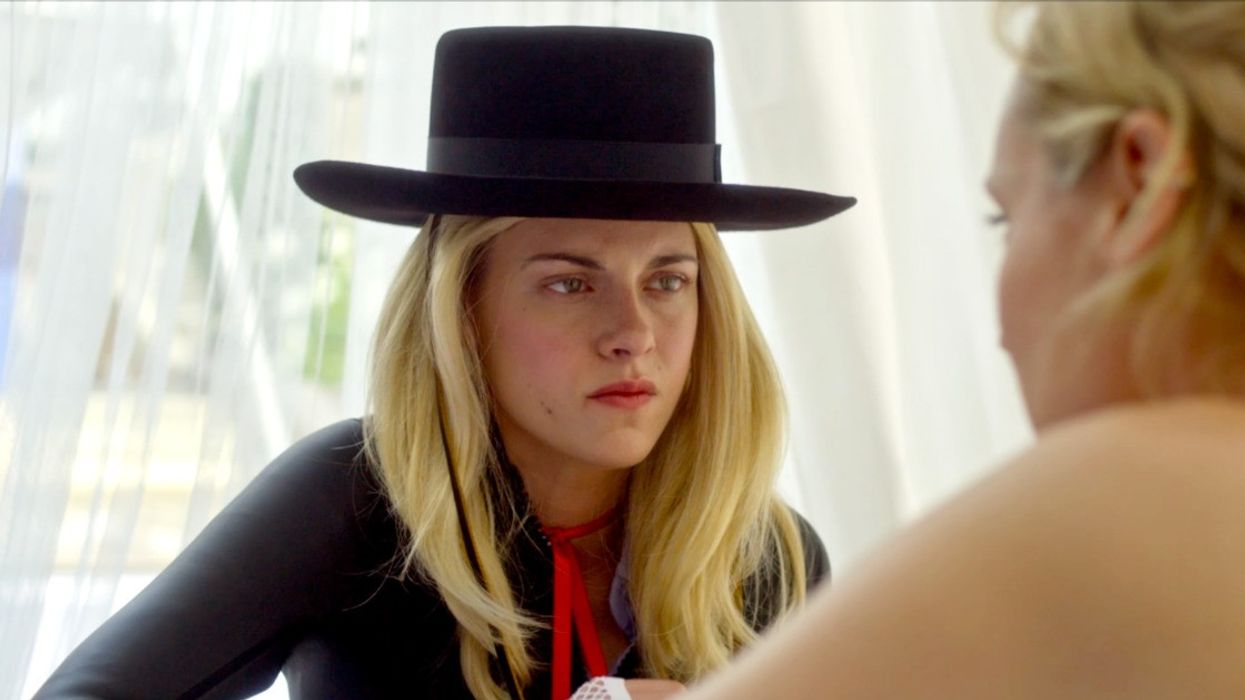
JT LeRoy is a story of sleight of hand, of what interests the reading public, of consumption, but it's also a story about hard work, about vision, and about how very difficult it can be to execute a vision that one thinks has truth to it, even if that truth doesn't correspond to everyone's definition.
JT LeRoy examines the author's story from numerous angles, and as a result, keeps revealing dimension after dimension until you realize you're watching a life, rather than a story. The actors chosen to enact this life, Laura Dern and Kristen Stewart, both apply acute intelligence and contemplation to the roles they do, which makes them apt choices here. There's a level of nuance, or personalization, to a Dern or Stuart performance--the sense that they've worked out a lot of backstory before appearing onscreen.
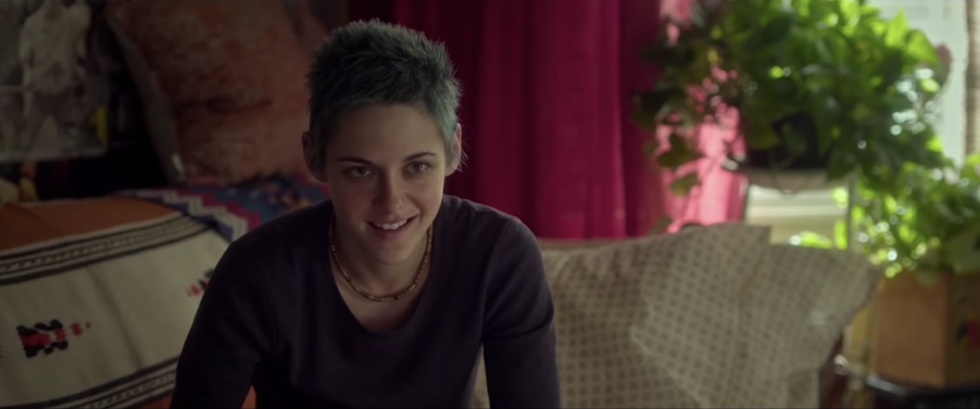
A healthy percentage of this film's viewers probably know the backstory already: Laura Albert (Dern) wrote several books under a pen name, creating an entirely fictitious persona to go with the pseudonym, using a fake accent when talking on the phone, and sending out a decoy to "be" her during public appearances. Savannah Knoop (Stewart), Albert's sister-in-law, played Leroy to great success; the author became a cult favorite of literati, artists, movie stars--everybody. And then? As the act became more and more difficult to maintain, the relationship frayed, and eventually, the hoax was discovered. And yet the books remain!
The film circles and floats around this narrative, giving a nuanced version of the story that leaves us with the sense that these two people were at work as much as they were at play, as much engaged in a project as involved in irrevocable self-discovery.
No Film School talked to the real-life Savannah Knoop and director Justin Kelly about working out a way of presenting the story that did it justice.
No Film School: I read that it took nine years to finalize the script and the screenplay, and I’m wondering if you could tell a little about what happened during that nine years, on the development of the story and the film?
Justin Kelly: Well, we started working together after I made a few short films and worked on quite a few other features. I met Savannah via a chance encounter through friends. We got together adapting the memoir. As with any true story, I just write the story; it seems as if it would be easier to have something to start with as opposed to an original idea, but it was incredibly difficult to make a feature-length story out of someone's life. It's so hard. The memoir could have been a ten-hour miniseries, easily. The time was also spent just meeting and reviewing and having friends review drafts and kind of consult with us, and just trying to pare it down, and find the heart of the story, which we realized was less about JT and the travel and the fame at the center of it, and more about making it a character piece about Laura and Savannah, trying to truly understand why they did what they did. I worked with Savannah, but we worked as co-writers, as though neither person was involved. And in the interim, of course, we were off doing our own things. I had grad school. I was super fortunate and got to make three features during that time period, which helped get JT off the ground. Just having work under my belt, having a film in Sundance and Berlin, really helped get the script out there and the cast that we had always dreamed of.
There are so many different ways to tell this story, and there are so many themes in it. It's almost prismatic.
Savannah Knoop: I think, also, that things sort of take as long as they take. We would do a draft, and then maybe have friends do notes, and then life would happen in the interim. If you do a draft and then you have a little time to put it away and then come back to it, it does make things clear for the next draft. So, it was sort of on its own schedule.
Kelly: Yeah, we did have some breaks, six months or so, and when we came back, it wasn't even about finessing, it was eliminating five characters, cutting the entirety of act one. We did pretty drastic heavy lifting. And you know, it's sometimes sad at first, because you lose things that you love, but then it doesn't feel like it's missing in the end.
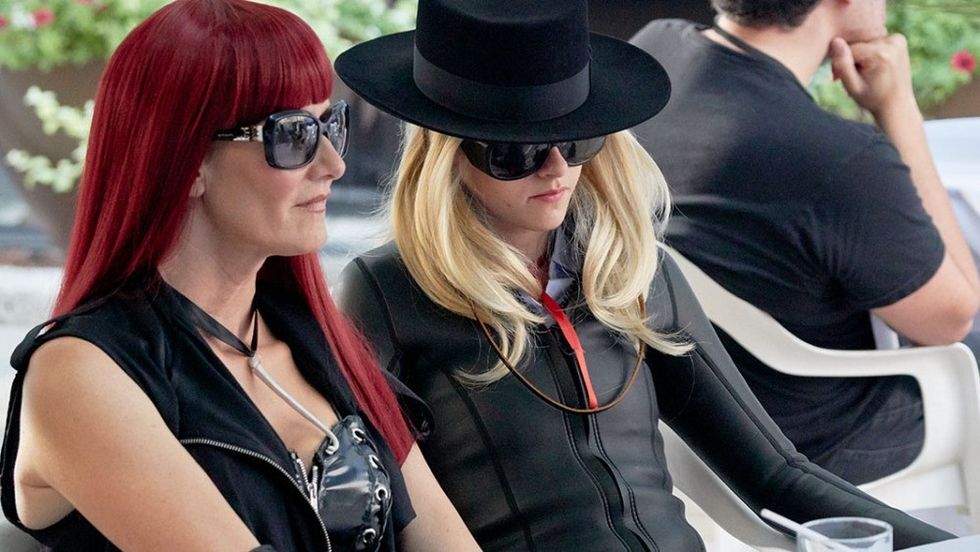
Knoop: It's in service to the story and in service to the process of filmmaking, a visual form of filmmaking.
NFS: What would you say the hardest part of telling this story was?
Knoop: There are so many different ways to tell this story, and there are so many themes in it. It's almost prismatic, when people see it, what they pull out from the story, what really speaks to them. Because I think you could go through it for any number of the characters involved. It could've been from the reporter's perspective, or you could've told it from Goeff's perspective or any of these people who were on the phone with Laura over the years. But you have to ground it in one person's perspective so that you can air all the different themes. Specificity helps you guide the story's narrative and get at the parts that seem to matter for Justin as the director, or for us as the writers.
Kelly: For me, the tricky part was making sure of the many moving parts, not only the backstory of Laura Albert. We didn't want to do flashbacks, so it was all about finding information throughout the film without being expository whenever possible. We had that totally down in the script, and on set, but as would happen to me in every edit, there were times where even if someone said something, or you learned something, it wasn’t really clicking, and so it took quite a long time to have a cut where the viewer could understand everything. You end up working things into the edit, with AVR and voiceover and a montage of magazines, a bunch of stuff that wasn't in the script that we put in there to make it a tight little ship.
Specificity helps you guide the story's narrative and get at the parts that matter.
Knoop: Justin is so hands-on as an editor. I know when I would make clothes, just to bring it into a different form, it was all about cutting all the time, and I wonder if was part of our process—taking a lot of information and parring it down. Editing was a huge part of the process.
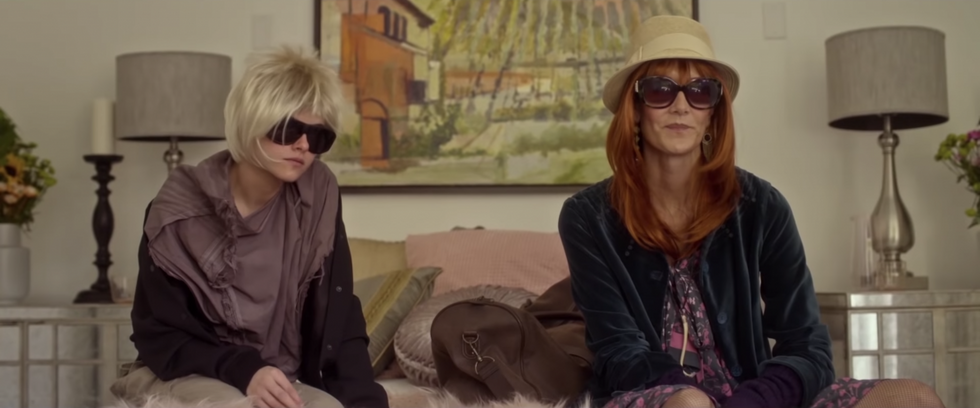
NFS: You cover a lot of ground, time-wise, in the film. How did you work out the timeline of the movie, with editing?
Kelly: In the script, we actually had dates for each year, from 2000 to 2006. Those were all in the first cut. I learned something from my first film, I Am Michael, where we did that with dates and locations. They remained in the film. At the tenth screening or something like that, I wished we had taken them out. I think it almost puts too much attention on the dates as super important when they’re really not. Technically, it's a five-year period, although it might not quite feel like that. Again, it's about crafting this story for the screen to make it the best film it can be. It's not important where they went, the exact year—it's about this journey and how different it feels at the end. So we took all the dates out and just left the first one. And the very last one is not a date, it just says “one year later.” And again, that used to say “one year later 2006,” but for those who don't feel like that much time passed, it would be like, "Wait, that was five years?" Later on, we made it a point in hair, make-up, and wardrobe, to have Laura and Sav very different during that last scene, so you really felt the passing of time.
Knoop: There are a lot of visual clues for this. There are so many hair looks for both of the characters, and it was actually really involved for the people who did hair. For example, when Savannah has blue hair during her gestative period, you knew that she was a different person then, through her hair. And there were clothing signifiers that developed as we went.
Kelly: With any low budget movie, the only way to pull these things off is to find a unified location, like Savannah's loft. It's all over in one to two days. Especially with hair and makeup—there'd be this grid with yellow highlighting for blue hair, or purple highlighting for short, dark hair with extensions. We just had to look at our schedule and try to do everything we could to combine the hair looks within that location.
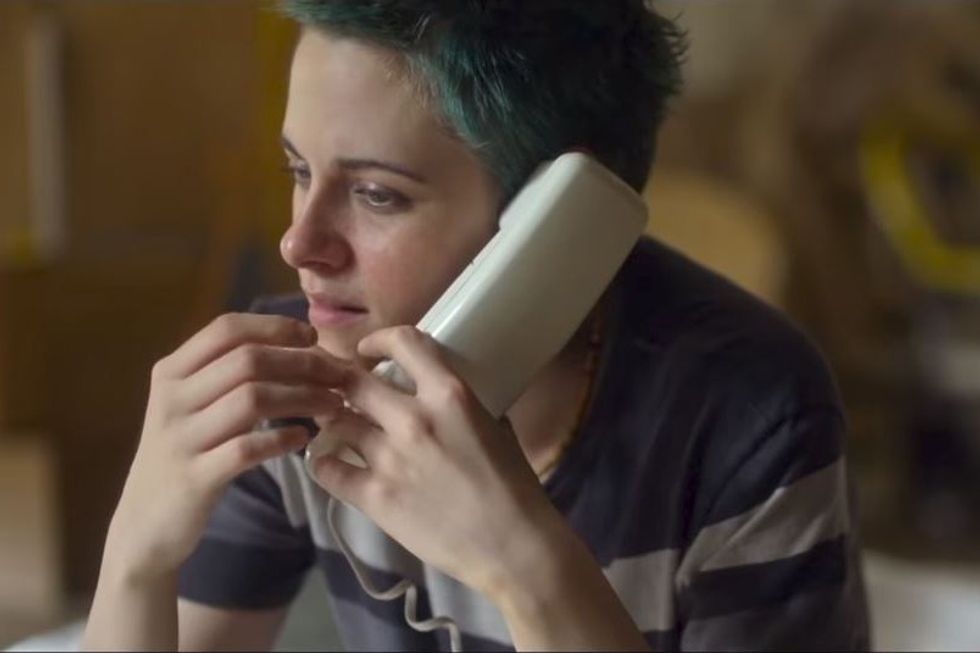
NFS: The locations in the film seemed very carefully chosen, very carefully planned out. I'm wondering if you could say a little bit about that—in particular Savannah's loft, of course, but then also Laura's apartment. The locations seemed very accurate to that period. How did you research that?
Kelly: Well, we both lived there for a long time, so we're pretty hardcore. There were certain things, like the crown molding or the sound effect of the metal gate closing when Savannah leaves the photo shoot with Bruce, this very particular metal clang of an annoying door to an apartment you would share. For Laura's apartment, we had an incredible production designer. That full apartment was an entire set. To create that wear and tear, down to the rubbed-off brass of the doorknob—she just did a really incredible job. Her name is Jean Cartier, and she did Enter the Void. We also just had an incredible crew. Sav and I just knew exactly how things should look and sound, and we were pretty hardcore about it. Sadly we couldn't shoot there, but we just did the best we could, with exteriors.
Knoop: And we had this one moment where we were doing a bus stop scene, and we had to scout a place in Canada that might possibly look like a bus stop in San Francisco. We even checked the height of the curb—weird stuff like that.
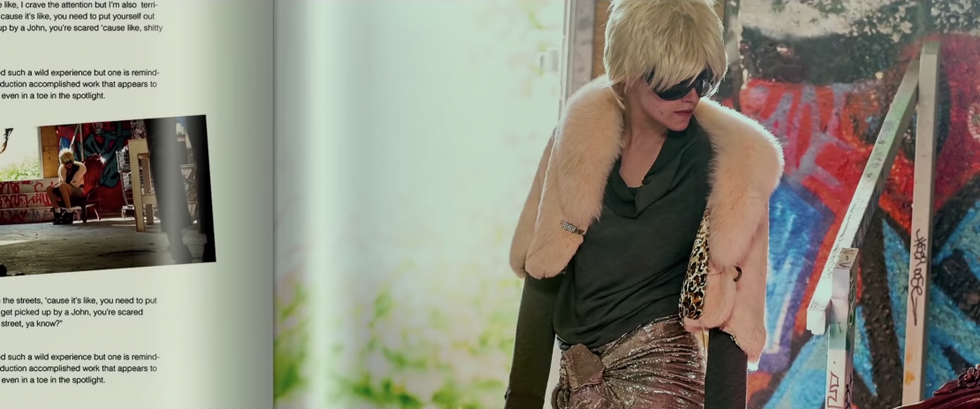
NFS: One other question I had for Savannah, but both of you can speak to it, when you're writing a script about yourself that's also a work of fiction, to what extent do you see yourself as a fictional character, and to what extent do you see yourself as a real person?
Knoop: You definitely get used to speaking about the character in third person a lot, which is kind of strange, but now I'm just totally used to it. You kind of start thinking about yourself as an object. You're looking at yourself kind of like an ant on a table. And in some ways, that's very liberating. I don't know if you know the writer Geoff Dyer? He was an inspiration to me, making me think, “You can do this, it's okay to do this the way you want to do it.”
NFS: The movie seems to me, as a viewer, very fair-minded. There are two very different figures working with each other. And their relationship seems somewhat symbiotic—I say somewhat because nothing's entirely symbiotic. But you don't see one of them taking more advantage of the other. Both of them are getting something out of their relationship. How did you work that balance into the screenplay?
Knoop: I'm so glad that you say that. It felt really important that it wasn't a narrative of being taken advantage of, on behalf of the Savannah character, or the Svengali thing which I think a lot of people view as the narrative. In fact, it's very important that it is seen as symbiotic. I think having the Savannah character be very open to the experience was key; that's the only kind of person this would work for, for this long. It doesn't add up that either person would do this for six years not out of their own volition. But that's the more complicated, more realistic version of the story.











